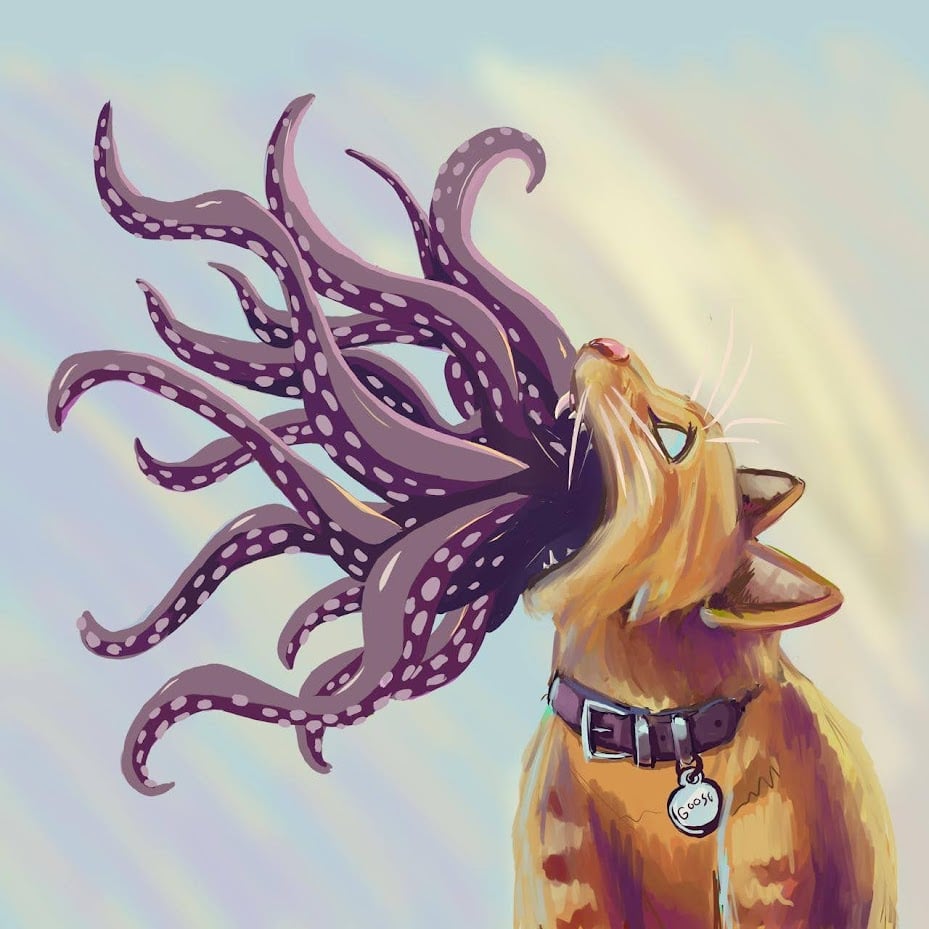I have a set of 3 Bra Premiere non-stick frying pans that I’ve used for a while. The coating on them says “Teflon Innovations without PFOA”. Recently I’ve noticed that on the most used pan, the 26cm one, the Teflon coating has started to peel off.
I know that Teflon coatings can release harmful fumes and chemicals if overheated, but what about if the coating is physically peeling? Is it still safe to cook with them? Or should I stop using especially the 26cm one? I don’t want to keep exposing my family to anything dangerous unknowingly. Any advice if these types of pans are still safe to cook with if the nonstick surface is peeling would be appreciated!
I’ve looked into this when buying pans, I’d say it’s still unsafe. Apparently in 2013 they changed their formulation so the chemicals aren’t toxic and if ingested it’s inert so it doesn’t affect you at all.
With all that, I still don’t trust non-stick and bought myself a stainless steel pan and I love it. It’s easy to maintain and when cooking properly most things don’t really stick either.
Would you have resources or advice about cooking properly on a stainless steel pan ?
Preheat the empty pan. You’ll know it’s hot enough when you throw water droplets on and it beads and dances around. Depending on the pan and situation, they’re pretty sensitive to heat so youd mainly cook on a low or medium.
Then use a good amount of oil and/or butter. I’ve even cooked eggs without much hassle.
Preheat and use a decent amount of oil
You often need less heat than you think. Use oil. Pretty much everything should cook better in a stainless with a little bit of learning curve, except eggs.* Yes, even fish. Keep steel wool and barkeeper’s friend handy for scrubbing them back to a shiny polish.
*Cook eggs in a non stick that you use for basically nothing but eggs.
Also try not to load it with a lot of food. I sometimes need to, and when I do, it seems to cool the pan a bit and the food starts to stick. I normally just raise the heat a bit.
First of all, if you’re going to buy a fancy expensive non-stick pan, spend the money and buy non-metal utensils to use with it.
Second, if you want to keep using metal utensils, buy anodized aluminum. It’s not perfectly non-stick, but it’s close and it can take a beating.
First of all, if you’re going to buy a fancy expensive non-stick pan,
spend the money and buy non-metal utensils to use with it.don’t.FTFY. Expensive non-stick has no practical benefit over cheap non-stick. They all wear out in the same amount of time regardless of price, so you might as well buy the cheap stuff so you don’t feel as bad when it’s time to throw it out.
Otherwise, I’d prefer tri-ply stainless clad aluminum to anodized.
In the pan itself sure, but there’s a lot of difference in the handle & weight between cheap and fancy though. All of my cheap ass nonsticks have had the plastic handles fall off before they start peeling
Hmm… maybe go for something on the cheaper end of the scale but not the absolute cheapest, then. Stuff from T-fal/Tefal (which is the company that invented nonstick cookware, by the way) has been cheap but decent in my experience.
Anodized aluminum is porous, that’s how the dye stays attached. Also aluminum is not recommended for use with acidic foods. I would personally avoid it.
Aluminum is porous. Hard anodized aluminum is not. That’s the whole point of anodizing the aluminum, so that it creates a barrier that stops it from reacting with acids.
The barrier to acids comes from oxidizing the surface, which anodizing does. But pores do not exist in bare aluminum, and hard anodize actually has the biggest pores! There is technically a sealer on the surface, but sticking it in hot water can sometimes release it, depending on what sealer was used. Here’s an article with more info: https://www.lightmetalage.com/news/industry-news/surface-finishing/introduction-to-anodizing-aluminum/
That’s for general anodizing, not hard anodizing for cookware. They aren’t going to use the same process for a chair that will never see water versus a pan designed to be immersed in water. Anodized cookware is fine to use with acids.
Nope. It’s exactly the same process - it’s just Type III not type II.
The sealer is what makes it non porous. That sealer is usually teflon that wears off.
It’s exactly the same process - it’s just Type III not type II.
It’s the exact same process, except that it isn’t. Hard anodized aluminum is not teflon.
Hard anodized aluminum is sealed with something, often teflon.
Can you give me an example? Calphalon for instance have “hard-anodized nonstick” but they’re still teflon. Anodizing is actually how teflon is usually made - the anodizing makes a porous surface that the teflon can stick to. So you’right that the sealer is different, it’s just teflon.
https://madeincookware.com/blogs/non-stick-vs-hard-anodized
Hard anodized aluminum is not teflon.
Correct, hard anodized does not equal Teflon. But point me to a link selling just a hard anodized pan. If you search “hard anodized cookware” the top links are all hard anodized + teflon (“nonstick”). Tfal, Calphalon, Cuisinart…
I have parrots so no telfon anything in my house. Bought two Green Pan ceramic skillets fairly cheap and they are still going strong a decade later. Definitely don’t use metal utensils in them.
What does parrots have to do with cookware?
Birds are extremely sensitive to the fumes given off by Teflon and will die. So no Teflon anything in the house.
Holy shit. Had no idea.
deleted by creator
Do you want to eat teflon? 'Cause that’s how you end up eating teflon.
In theory, the teflon should continue to be inert as it passes through your digestive tract, but don’t do that. It’s time to throw out the pan.
Related advice: non-stick is overrated to begin with. Replace all your nonstick pans with tri-ply stainless clad aluminum, cast iron (enameled or not), carbon steel, etc…
If you insist on having a teflon pan, recognize it for the semi-disposable item it is: get the cheapest one you can find, use it only for things that really need it (e.g. eggs), and accept that you’re going to be throwing it out and replacing it every couple of years.
I don’t even think you need one for eggs necessarily. I switched from PTFE nonstick to all metal (stainless/carbon steel and cast iron) a few years back. Eggs were no problem once I figured out heat control. I cook scrambled eggs and omelettes every week with no sticking.
I did eventually get a ceramic nonstick for making soft tofu in a sticky sauce. Definitely don’t try that in a stainless steel pan. It worked okay in the carbon steel wok, but was obnoxious to clean.
I don’t even think you need one for eggs necessarily.
Oh, for sure, you don’t! I didn’t phrase my previous comment correctly: what I meant to convey is that if you must have a teflon pan, only use it for the very few special things that benefit from it the most instead of as a general-purpose pan.
non-stick is overrated to begin with
I’d say it’s correctly rated. It does the no-stick well while not being as durable. In my experience that’s what people expect from it.
No, it’s toxic. Replace it with carbon steel, stainless steel, or cast iron.
I got tired of seeing my teflon-coated pans wear out like that or lose their non-stickiness, it bothered me to realize that the ‘premium cookware’ I was buying was temporary trash I’d need to replace every couple of years.
I retired my teflon cookware and now have just steel and cast iron (and ceramic-coated cast iron) and I don’t miss teflon-coated cookware at all.
Sure, sometimes I end up with stuff stuck to my pans, but realistically that was true with my ‘non-stick’ pans as well. The nice thing about cast iron and steel is that with use, they seem to get better, whereas the teflon pans start out nice but deteriorate in the way they work. When I do end up with stuff stuck to the pan, I can scrub that clean in a few seconds with a steel scrubber or scraper, whereas stuck-on stuff with teflon (the stuff the dishwasher didn’t get, anyhow), seemed to demand the extra-soft scrubber (and lots of time, because the soft scrubber doesn’t work as well).
I have one 8 inch Teflon pan I bought in 2012 for French omelletes. It’s only ever seen a plastic fork and spatula, medium heat, still looks new
Did you know that if you use Teflon pans in a house with pet birds they might die from the fumes? Since we historically used canaries to detect dangerous gasses in coal mines, might we take that as an indication that Teflon pans should not be used at all?
The scratched ones are bad and should not be used. Going forward you should ditch all your nonstick pans and buy cast iron or stainless steel.
FWIW seasoning a cast iron can kill birds too. So can the fumes frommicrowave popcorn.
I couldn’t find any sources for this. Do you have any?
My girlfriend is a materials scientist specialising in non-stick coatings.
The first time she came to my house, I had to throw away all teflon with even a scratch on it. She said once the surface is broken it will leach chemicals into your food.
She said they are perfectly safe whilst the coating is in tact and uses non-stick pans herself. Just replace them as soon as you notice the surface is broken.
Just replace them as soon as you notice the surface is broken.
So like twice a month?
Don’t use metal on your pans maybe?
My stainless steel cookware set has worked better and lasted longer than every non-stick pan I have ever owned.
Ugh… I’ve tried this route… I really have, but shit like eggs sticking like a mother fucker is just too annoying. Unless you drench the pan in oil.
I’ve switched to ceramic non-stick, I’m sure it’s not perfect either but you gotta make compromises.
I’ve dedicated myself to figuring this out. It’s not that you have to drench it in oil, but there needs to be enough to cover the pan.
The most important part though is that the pan is heated up enough when you crack eggs on it. And give the eggs a little bit of time to cook before flipping them.
It takes a lot of practice and you’re going to be eating scrambled eggs instead of fried eggs for a while. But keep at it.
There is a Goldilocks temperature with stainless for cooking eggs. Too hot or too cold and it sticks. I had the ritual down before COVID, where I would turn the pan on and prep my coffee while it heated up to the perfect temp.
This, so much this. The eggs need to cook long enough to the bottom of the pan to then release themselves. Cooking temp is super important here.
It sounds like ya’ll are over cooking your eggs… At least for my taste.
I’ve baked eggs on stainless for a while, best advice I have is to get the eggs out of the fridge like 15 mins before you bake them. That way the temperature difference is less when they hit the pan. The same goes for baking eggs in any other type of pan.
Fish, now that takes practice and patience.
Have a ceramic pan dedicated for sticky stuff that doesn’t need to be cooked too hot. Ceramic that is not used on high heat lasts a long time. Obviously with wood of silicone utensils.
Eggs are indeed tricky on the stainless. I have found that ceramic or a well-seasoned cast iron pan is a lot better for eggs if you aren’t good at hitting that exact temperature that they need to be at to cook and release on their own with just a minimal amount of oil/butter. My parents have a single teflon pan that is just for eggs, but they cook eggs so frequently that they need to replace it all the time because it starts to peel and flake in no time flat.
Well-seasoned, smooth bottomed cast iron or carbon steel can be great egg pans. There’s a learning curve but IMO the maintenance isn’t as daunting as many think.
I’ve got a de Buyer carbon steel pan that we use for eggs most mornings; it doesn’t perform identically to a Teflon pan but it’s still very very good. Maintenance is just (1) a drop of oil before the food goes in, (2) quick wipe under the faucet with a dish brush, and (3) dry with a dish cloth before putting away. I’ve had the pan for almost 10 years now and there’s no reason it shouldn’t last the rest of my life (and then some).
You might be cooking to hot, I use cast iron so I can’t speak directly about steel but low and slow is best for eggs on cast iron.
Just use cast iron at that point. Season it well enough and it’ll be smoother than any nonstick you can buy
Unless you drench the pan in oil.
Nah, you can develop technique to prevent this. What’s great is on stainless you can use a stainless turner as well. When it comes to eggs it’s all about adding enough butter to cover the bottom of the pan and then keeping the egg moving after the initial side is cooked enough to release.
Omelettes are the same on stainless. You just have to keep things moving. It requires a little more technique and attention but IMO that’s better than having a side of Teflon flakes with breakfast.
I would rather deal with the (often exaggerated) care of a cast iron pan than deal with non-stick Teflon or similar. And have. But stainless steel is a comfortable favorite for common jobs like cooking soup or quickly frying an egg or two. Light, easy to clean, and practice usually means it won’t stick if you know how to grease a pan and keep the temperature right.
Replace ‘em. Get either cast iron or stainless steel, once both are seasoned properly they are just as non-stick as teflon pans and much more durable. Lodge cast iron pans are like $20 and are super easy to take care of if you cook frequently.
I don’t think stainless steal seasons. Maybe you’re thinking of carbon steel?
Stainless is great to cook with but you have to wait for the pans to come to temp before adding food
Nothing is nonstick like Teflon … But the VAST majority of cooking doesn’t require that level of nonstick, either.
Unless you have a French omelette addiction, you probably don’t need Teflon.
once you go cast iron you never go back
- Cast iron = brilliant and last forever
- Stainless steel = brilliant and last for ages
- Carbon steel = brilliant and last for ages (but expensive)
Cooking on plastic doesn’t feel right. Even if it’s perfectly safe, I’m happy to stick with any of the above and not cause excess waste by having to throw out pans when they scratch.
deleted by creator
It says that’s steel, not cast iron. Cast iron and carbon steel (which that tray does not claim to be) benefit from seasoning with oil. As far as I know, regular steel does not.
That said, still weird that it rusted. Should be stainless steel which shouldn’t rust.
I’d bet it’s carbon steel my pizza steel is and needs some fresh seasoning every year or so. Brillo pads and peanut oil has always worked well for me.
Ignore all the comments in this thread, mate. Everything is different in the EU, and you’re getting advice from Americans, who have zero consumer rights against being poisoned 😂
I stopped using non stick pots/pans completely. PFOS or whatever other fucked up, deadly, untested chemicals can get out of my life forever. We may think they’re safe but do we really know? “They” told us the original teflon was safe and look at how that turned out.
I now have an induction range and only use cast iron and stainless steel. Yes, I sometimes have to scrub or soak my pans but I believe me and mine will live longer and healthier.
Cast iron does make better tasting food, IMHO. Takes some getting used to and more work to clean but I think it’s worth it.
Getting rid of Teflon around here too.
I like the process of maintaining cast-iron pans. And they get better theore I use them. Definately better than the constant deterioration of the Teflon ones.
Enamel coated steel is ok. Just steel is ok too.
But I really like the cast iron ones.
I have bare and enameled cast iron and bare stainless steel. I have not heard of enamel coated steel. I need to research that.
It’s not very durable, I don’t recommend it. Inherited it. Fine a a freebee, but I wouldn’t spend money. And if it starts to chip just toss it out.
Pretty sure I do have enamel coated steel for my camp set of dishes. Interesting.
“They” is frequently used as an antisemitic dog whistle fyi
There is literally nothing in the post indicating any religion. I interpreted “they” in this case as industry leaders/the FDA
This is correct, thanks.
No idea how someone could think I was being antisemitic from that post yet here we are.
Man, it’s the “ok signs are nazi dog whistles” shit all over. You aren’t, they’re being knee-jerk over reactive.
I didn’t think you were being antisemitic, i assumed you were unaware of the way that antisemites use the word
Wat
My guy, “they” is just a pronoun. Not everything can be a dog whistle.
Its specifically when applying emphasis, usually with ((())), but not always. Using the word they on its own is not an issue, but in cases like this its usually better to say who you mean, instead of letting people assume.
Or we can not give quite so much power to single word dog whistles, particularly in cases when there’s no actual anti-Semitic content within the post. It’s like the fuckin OK sign all over.
I think it’s better to take in the whole context, and then you don’t have to assume anything.
deleted by creator
Fuck off Israel propoganda bot.
Beep boop you got me
“Safe” is a relative term. Is it going to set your house on fire? No. Is it going to release harmful gasses while you cook and leech toxic metals into your food and slowly poison you? Yeah, probably. But, like, how old are you? Maybe you’re like 98 years old and don’t have that much longer to live anyway.
Fuck’s smatterchew? Throw that shit out and get a new pan. Damn.
What did you do to the poor thing? Looks like you’ve been stabbing it with a fork 24/7 for years. Toss it, and be (a lot) more careful with the next one - or skip nonstick entirely. They already have a finite lifetime when not abused, and if you manage to ruin the coat in one spot that’s a hotspot for “scaling off” more.
Stainless steel can take a beating, though, go nuts.
Cast iron is non-stick and so much easier to clean
Cast iron is nice, I recommended stainless because I assume someone who treats pans like this would ruin cast iron too.
Cast iron is nearly impossible to “ruin”, the idea that you can is nothing more than a huge circlejerk. Even a completely rust covered cast iron pan can likely be made basically good as new with a little effort.
Obviously restoring your pan every time you wanna use it isn’t practical, so you still wanna take care of it, but actually permanently ruining it? Good luck.
I wasn’t really referring to permanently mangling the iron. Taking care of seasoning is an extra thing, is all, and the seasoning can absolutely be ruined.
It depends. I ruined my Teflon, but my cast iron is great. Mostly I just hate plastic spatulas.
Unless of course you want to use a dishwasher. Even manually it really isn’t ‘so much easier to clean’ and you have to spend time seasoning it.
Afaik you can’t put the non stick in the dishwasher either?
I don’t see why not? They won’t rust in their like cast iron would
Not about rust, but the chemicals in the detergent can harm the coating iirc.
Been doing it for years with no apparent ill effects
Once you season cast iron you can clean it however you want. Even with soap. The oils you bake on there at such high heat causes polymerization.
You don’t have to continue to season cast iron after cleaning it, unless you’re cleaning it with a fucking angle grinder.
Putting a seasoned cast iron pan in the dishwasher isn’t a great idea, in my experience
Dishwashers can have some pretty high pressures involved, I wouldn’t be surprised if it can literally chip the seasoning off.
I might be wrong, but I think if your “seasoning” is thick enough to chip off it means you did it wrong and failed to scrub away the excess food residue.
I have a cast iron pan that I’ve used for almost 10 years. I seasoned it when I got it. To clean it, I scrub it with steel wool, dry it off then rub a coat of oil on it. It still looks and works perfectly. Cast iron is extremely easy to clean and upkeep.
Yeh,
Scrubbing it with steel wool, drying it and then rubbing in oil doesn’t sound as easy as ‘put in dishwasher’. I couldn’t be doing with that, cooking for a family every day
I cook for a family of four every day and taking 3 minutes to clean my cast iron pan is the least time consuming part of it. You’re being dramatic.
I don’t have any zods but i got some chipped rubies
I’m not being dramatic- I just don’t see much benefit from the faff. And I’ve never actually found a well-seasoned cast iron pan that is as non-stick as a non-stick.
… hence the need for the wire wool, I guess.
Oh, my point wasn’t that a cast iron pan is as non-stick as Teflon. I was simply talking about cast iron upkeep. I have a non stick pan and it’s much better for certain things for sure. But I wash it by hand instead of putting it in the dishwasher.
- Chunks of teflon are getting in your food
- The aluminium underneath, which was protected by the teflon, is getting into your food (especially true with acidic foods, since they will react with aluminium and erode it).
I don’t know that the PTFE is going to be any worse than all the other micro plastic we’re eating*, but the aluminum definitely is a problem.
Id suggest replacing it (or using the others until you can replace it,)
Tomorrow might be a good time if you can afford it, with all the sales.
*ain’t life grand?
There was that town in the US where 3M dumped PTFE into the rivers and it made it into the drinking water, I watched a documentary where people in that town have a cancer rate 169 times the national average. IIRC
PTFE is one of the greatest chemicals to ingest… if you want to grow some extra body parts.
I think you might be thinking about this
Perfluorooctanoic acid (PFOA), a chemical formerly used in the manufacture of PTFE products such as non-stick coated cookware, can be carcinogenic for people who are exposed to it (see Ecotoxicity).[66] Concerning levels of PFOA have been found in the blood of people who work in or live near factories where the chemical is used, and in people regularly exposed to PFOA-containing products such as some ski waxes and stain-resistant fabric coatings, but non-stick cookware was not found to be a major source of exposure, as the PFOA is burned off during the manufacturing process and not present in the finished product.[64] Non-stick coated cookware has not been manufactured using PFOA since 2013,[67] and PFOA is no longer being made in the United States.[66]
Shouldn’t be used anymore
PTFE is one of the greatest chemicals to ingest… if you want to grow some extra body parts.
Actually ingesting teflon “chips” (hah) shouldn’t do anything. It should just pass through without interacting with your body. Not a pleasant thought, eating them, but shouldn’t have any harmful effects either.
That’s the stuff, serves me right for only half paying attention to a documentary. Either way I’ll probably steer clear of Teflon pans in future.
I did try to find ScotchGuard a few years ago when I got a new Sofa (Couch for the Americans) and I found it was discontinued because it was probably just PFOA in a spray bottle :)
Depends, do you think eating lead is safe?
















